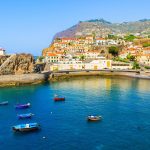The dream that became reality
When in early 1992 Lisbon beat Toronto in the competition to become the site of Expo’98, the last world fair of the 20th century, no one imagined the effect it would have on Lisbon’s long-term development.
The fair planners wanted it to mark the 400th anniversary of Vasco de Gama’s historic voyage which discovered India, and they succeeded in persuading the government to allot a 30-hectare site in the rundown east end of Lisbon for the construction of the fair pavilions.
The previous world fair was still on in Seville and the planners went to see what they could learn. They found a fair which was very successful in terms of visitor numbers, but there was no plan to keep or use any of the pavilions. In fact, after the fair finished, everything was taken down, and the planners of the Lisbon fair decided that they wanted to leave the city with a range of special buildings that would continue to be useful after the fair had closed.
At that point, the former Portuguese Commissioner to the EU, António Cardoso e Cunha, was appointed President of Expo’98 and he decided to use the fair as an opportunity to launch a major urban regeneration project covering a 300-hectare site between the railway and the River Tagus. Previously it had been the site of an oil refinery and the land was being used for oil storage tanks and as a rubbish dump.
The dream comes alive
The government backed his idea. Through specially enacted compulsory purchase powers, it acquired all the land and gave it Expo’98 to dispose of as it wished. It also gave Expo’98 the right to act as its own planning authority and to give planning permission for new buildings. It supported Cardoso e Cunha’s dream that, within 20 years, a new central section of Lisbon would be developed, with 25,000 people living in a green oasis next to the river.
It was clear that good access by road and rail was fundamental, and the government went into overdrive. The long-planned Lisbon inner and outer ring roads were brought forward, the location of the new bridge over the River Tagus was decided, and all led to, or was directly linked to, the Expo area.
Expo’98 was also going to be the site of a new Oriente railway station and bus terminal.
Few believed that Portugal could pull off such a huge project. Even the land clearance and the removal of the contaminated soil was a major undertaking and, at the same time as planning a whole new district, the Expo’98 team had to design the exhibition itself and persuade the governments of other countries to participate at a time when such fairs seemed to be past their sell-by date.
Politics, the Portuguese press and the weather did not help. In the autumn of 1995, with less than three years to go to the opening of the fair, the government changed, and the socialists came to power. They immediately started attacking Cardoso e Cunha, and the press was only too happy to print all the negative stories it could find. Then the winters of 1996 and 1997 were the wettest on record and the whole Expo site was turned into a morass of mud, from which it seemed impossible that any building could emerge.
On the day – 20 years ago – that Expo’98 opened, the whole country breathed a sigh of relief but still did not quite take in what had been achieved. On the site, besides the new station, there was the Oceanarium which gets more than a million visitors every year, the Arena (Altice Arena) which hosts everything from pop concerts to tennis tournaments, a Lisbon fair centre (FIL) and other permanent buildings.
Over the next 20 years, these were followed by thousands of homes, many office blocks, a new Courts Complex, a shopping centre, parks and gardens.
The Parque das Nações, as the Expo area is now known, is one of the reasons why Expo’98 is now considered to be one of the most successful world fairs of all time. The dream has become a reality which we can all enjoy.










